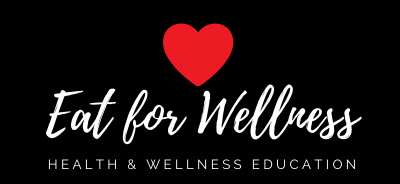Intermittent Fasting for Beginners: Unlocking Weight Loss and Health Benefits
Intermittent fasting has taken the health and wellness world by storm, offering an intriguing approach to dieting that promises not only weight loss but also a myriad of other health benefits. This beginner's guide to fasting will walk you through the basics of this eating pattern, from popular methods like the 16/8 method and the 5:2 diet to more advanced techniques such as alternate day fasting and the OMAD (one meal a day) approach. By understanding the health benefits of fasting, including improved metabolic health and enhanced mental clarity, you can make informed decisions about how to integrate these practices into your lifestyle. Join us as we explore practical fasting tips, address common challenges, and provide you with the tools needed to embark on your fasting journey with confidence. For more information, you can read about intermittent fasting here.
Understanding Intermittent Fasting
Intermittent fasting is more than just a diet—it's a lifestyle. It involves alternating cycles of eating and fasting, which can be tailored to meet individual needs and preferences. This section will provide an overview of what intermittent fasting is, explore popular methods, and delve into the numerous health benefits.
What is Intermittent Fasting?
Intermittent fasting is an eating pattern that cycles between periods of fasting and eating. It's not about what you eat but when you eat. Many people find it to be a more sustainable approach than traditional dieting.
During fasting periods, your body switches from burning glucose to burning stored fat, which can lead to weight loss and other health benefits. For more detailed information, the John Hopkins Medicine website provides an excellent overview.
This method has gained popularity due to its simplicity and flexibility, accommodating various lifestyles and dietary preferences. However, it's essential to understand the basics before starting. By tailoring your fasting approach, you can maximize benefits while minimizing challenges.
Popular Fasting Methods
There are several popular methods of intermittent fasting, each with its unique approach:
16/8 Method: Fast for 16 hours and eat within an 8-hour window.
5:2 Diet: Eat normally for five days and restrict calories to 500-600 for two days.
Alternate Day Fasting: Switch between days of normal eating and fasting.
OMAD (One Meal A Day): Consume all daily calories in one meal.
The Mayo Clinic provides insights into each method's benefits and challenges. Each method suits different lifestyles and goals, so it's crucial to choose one that aligns with your schedule and health objectives.
Health Benefits of Fasting
Intermittent fasting offers numerous health benefits, including:
Weight Loss: By reducing calorie intake and boosting metabolism.
Improved Metabolic Health: Enhances insulin sensitivity and reduces inflammation.
Enhanced Mental Clarity: Increases levels of brain hormones like BDNF.
For a deeper understanding of these benefits, consult the Mayo Clinic Health System. While many claim fasting can extend lifespan, more research is necessary to confirm these effects. However, the potential benefits are promising.
Getting Started with Fasting
Embarking on an intermittent fasting journey requires careful planning and consideration. This section will guide you through choosing the right fasting method, offer tips for beginners, and help overcome common challenges.
Choosing Your Fasting Method
Selecting the right fasting method is crucial for success. Consider your lifestyle, work schedule, and personal preferences when deciding:
16/8 Method: Ideal for those who prefer skipping breakfast.
5:2 Diet: Suitable for those who want flexibility during the week.
Alternate Day Fasting: Best for those who can handle frequent fasting periods.
OMAD: Fits those with a busy schedule seeking simplicity.
A consultation with a healthcare provider, as recommended by Harvard Health, can help tailor your fasting plan to your specific needs.
Tips for Beginners
Starting intermittent fasting can be daunting, but these tips can ease the transition:
Start Slow: Gradually increase fasting periods.
Stay Hydrated: Drink plenty of water throughout the day.
Listen to Your Body: Stop if you feel unwell or overly fatigued.
Be Consistent: Stick to your chosen method for best results.
Consistency is key to adapting to this new eating pattern. Begin with shorter fasting periods and extend as your body adjusts.
Overcoming Common Challenges
Intermittent fasting can present challenges, but they are surmountable:
Hunger Pangs: Distract yourself with activities or drink herbal teas.
Social Events: Plan fasting periods around these to maintain flexibility.
Energy Lows: Ensure nutritious meals when breaking fasts.
Understanding these challenges and having strategies in place can help maintain your fasting regimen.
Integrating Fasting Into Your Lifestyle
Incorporating intermittent fasting into your lifestyle requires balance and mindfulness. This section discusses how to integrate fasting with balanced living, maintain mental clarity, and ensure long-term health and wellness.
Fasting and Balanced Living
Balancing fasting with daily life is essential. Here are some considerations:
Meal Planning: Schedule meals around fasting periods to avoid disruptions.
Workouts: Time exercises during eating windows for optimal energy.
Rest: Ensure adequate sleep to support recovery and mental clarity.
Maintaining balance is vital to sustain fasting practices in the long term.
Maintaining Mental Clarity
Fasting can enhance mental clarity, but it requires a strategic approach:
Nutritious Meals: Focus on balanced diets when eating to support brain function.
Mindfulness Practices: Incorporate meditation or yoga to reduce stress.
By focusing on nourishing foods and mental exercises, you can maintain and even enhance mental clarity during fasting.
Long-Term Health and Wellness
For sustainable health benefits, consider these long-term strategies:
Regular Check-ins: Monitor health markers with healthcare professionals.
Adaptation: Modify fasting practices as needed to suit changing lifestyles and health needs.
Education: Stay informed about new research and developments.
By integrating fasting into a holistic wellness approach, you can achieve and maintain your health goals over the long term.
Not sure how to get started with fasting or if it's right for you? Reach out to one of our coaches and we'd be happy to help!


